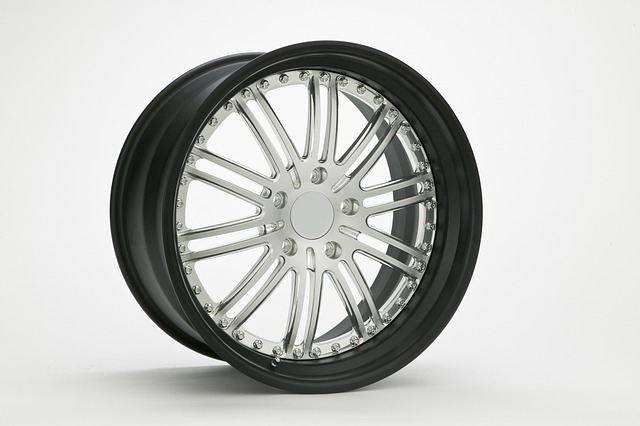Looking to register your car in California? This comprehensive guide walks you through every step, from understanding key requirements for car registration in the Golden State to gathering essential documents for a crucial VIN verification. Learn how to complete the process online or in-person, pay applicable fees, and receive your official registration documents. Master the art of California car registration with our simple, step-by-step instructions, emphasizing the importance of accurate VIN verification every step of the way.
- Understand the Requirements for Car Registration in California
- Gather Necessary Documents for VIN Verification
- Perform a Vehicle Identification Number (VIN) Check
- Complete the Registration Process Online or In-Person
- Pay the Required Fees and Receive Your Registration Documents
Understand the Requirements for Car Registration in California

Before diving into the registration process, it’s crucial to understand the requirements for car registration in California. All vehicles operated on California roads must be properly registered with the California Department of Motor Vehicles (DMV). This involves providing specific documents and passing a VIN (Vehicle Identification Number) verification process. The VIN is a unique code that identifies your vehicle, and its inspection ensures accurate record-keeping and helps prevent fraud.
A key component of this requirement is undergoing a VIN inspection, which can be done through a mobile vin verifier or at a DMV office. This inspection verifies the authenticity of your vehicle’s information, including its make, model, year, and whether it has any outstanding issues that could affect registration. Ensuring compliance with these standards not only facilitates a smooth registration process but also plays a vital role in maintaining California’s safe and efficient transportation infrastructure.
Gather Necessary Documents for VIN Verification

Before you begin the registration process, it’s crucial to gather all the essential documents for VIN (Vehicle Identification Number) verification. This step is a critical part of ensuring your vehicle’s legitimacy and history is accurately checked. You’ll need several key pieces of paperwork, including your vehicle’s title, proof of insurance, and a valid driver’s license or state ID. Additionally, you should have your VIN from the vehicle’s registration or by checking the label on the driver’s side door jamb.
For a smoother process, consider having digital copies of these documents readily available. If you’re unsure about any aspect, it might be beneficial to consult with a professional or use a mobile VIN inspection service that can help verify your vehicle’s details quickly and accurately, especially if you’re purchasing a used car. This way, you’ll have one less hurdle when registering your new (or used) California vehicle.
Perform a Vehicle Identification Number (VIN) Check

Before registering your car in California, performing a Vehicle Identification Number (VIN) check is an essential step. This process involves verifying the VIN data to ensure the vehicle’s history is clear and matches the information provided by the manufacturer. A proper VIN verification helps identify any potential issues or discrepancies, such as outstanding recalls, previous accidents, or theft reports, which could impact your registration process.
In California, you can conduct a mobile VIN verification using specialized services that offer convenient, on-site inspections. These mobile vin verifiers ensure a swift and accurate check by accessing comprehensive databases to cross-reference the vehicle’s unique VIN against recorded data. This modern approach saves time and provides peace of mind, especially when purchasing a used car.
Complete the Registration Process Online or In-Person

You have the option to complete your car registration either online or in-person at a California Department of Motor Vehicles (DMV) office. Both methods involve submitting essential documents and ensuring your vehicle meets safety standards, but going digital can save you time and effort. If you choose the online route, start by obtaining a Vehicle Identification Number (VIN) verification report from a trusted source, such as a mobile VIN verifier or through the DMV’s own services. This crucial step confirms your vehicle’s history and authenticity, which is essential for a smooth registration process.
Once your VIN inspection is complete, create an account on the California DMV website and follow their digital registration process. Provide all required information, including details about your car, insurance, and personal data. Alternatively, if you prefer an in-person visit, gather the necessary documents (like proof of insurance, registration from a previous state, etc.) and head to your nearest DMV center. There, a representative will guide you through the process, which includes verifying your vehicle’s details and ensuring compliance with local regulations, before finalizing your car’s registration.
Pay the Required Fees and Receive Your Registration Documents

After completing the necessary paperwork for car registration in California, the next step involves paying the required fees. These include the registration fee, vehicle duty, and a title fee if applicable. The cost can vary based on factors like your vehicle’s age and type. Once you’ve paid, the California Department of Motor Vehicles (DMV) will process your application and conduct a vin verification to ensure the vehicle’s identification number (VIN) is accurate and matches the vehicle’s characteristics.
You’ll then receive your registration documents in the mail, typically within a few weeks. These include your vehicle’s registration certificate and a license plate if you haven’t already obtained one through a private issuer. If you prefer a more convenient option, some services offer mobile vin inspection or mobile vin verifier services, allowing you to complete this step without visiting a DMV office.
Registering a car in California is a straightforward process that involves understanding specific requirements, gathering essential documents, and completing the necessary steps. By performing a Vehicle Identification Number (VIN) check, which ensures vehicle authenticity, you set the stage for a successful registration. Whether opting for an online or in-person approach, adhering to the guidelines outlined in this article will enable you to swiftly navigate the process, pay applicable fees, and obtain your registration documents, making you legally compliant on California’s roads. Remember, accurate VIN verification is key to ensuring a seamless car registration experience.
